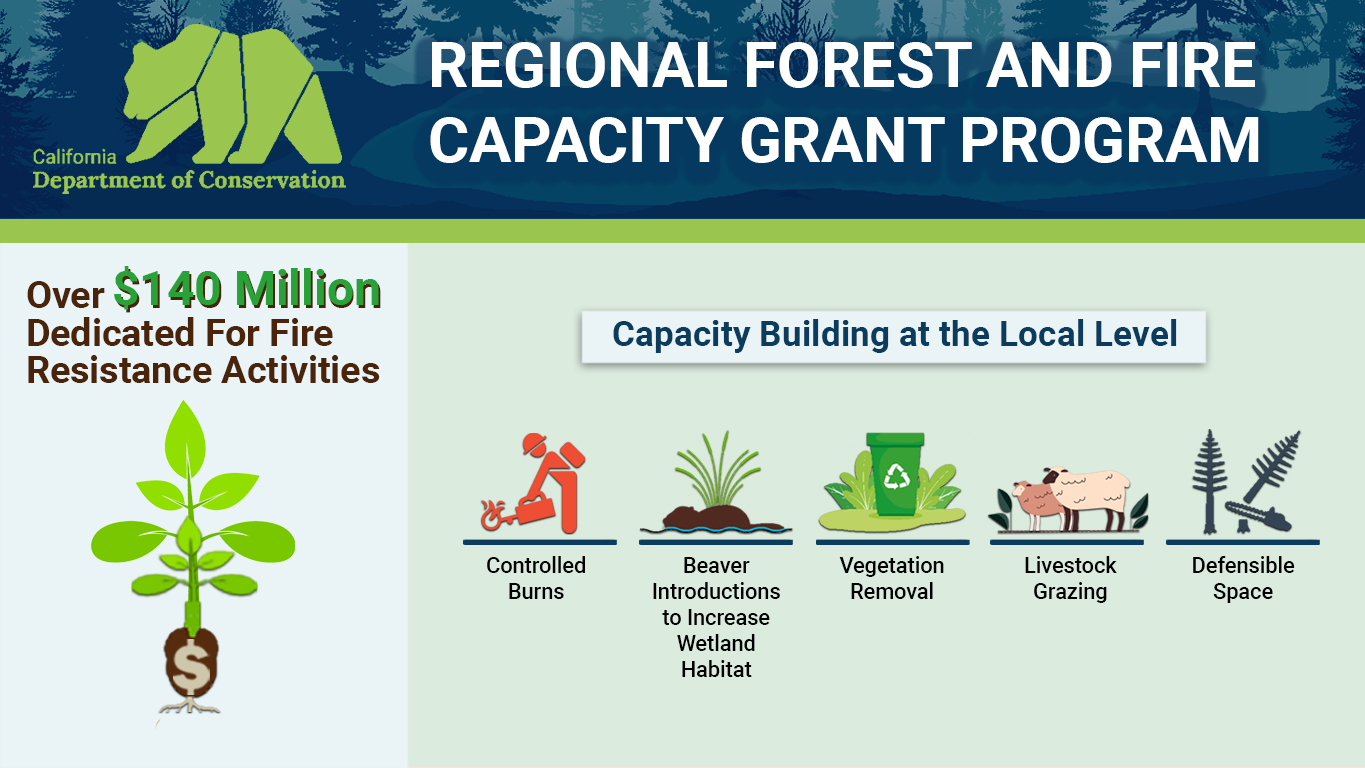Program Background
Public Resources Code section 4208.1 establishes the Regional Forest and Fire Capacity (RFFC) Program to support regional leadership to build local and regional capacity and develop, prioritize, and implement strategies and projects that create fire adapted communities and landscapes by improving ecosystem health, community wildfire preparedness, and fire resilience. The Department will provide block grants to regional entities (Regional Block Grantees) and to eligible coordinating organizations (Statewide Block Grantees) to support the statewide implementation of the program.
To accomplish the RFFC Program’s objectives, block grants will be utilized by recipients to support partner capacity, project readiness, implementation of demonstration projects, and regional priority planning to achieve landscape-level and community wildfire resilience consistent with the California Wildfire and Forest Resilience Action Plan as well as the California Forest Carbon Plan and Executive Order B-52-18.
Broad and inclusive outreach and involvement in decision-making is a priority of the program. Regional block grantees are expected to partner extensively across their region to identify priorities and develop projects. Current block grantees partner heavily with state, federal, tribal, and local governments as well as water agencies, resource conservation districts, fire safe councils, and other nonprofits.

Explore The Partnerships & Programs Within Each Region:
Interested in learning more about our Regional Priority Plans? Explore our new mapping tool:
